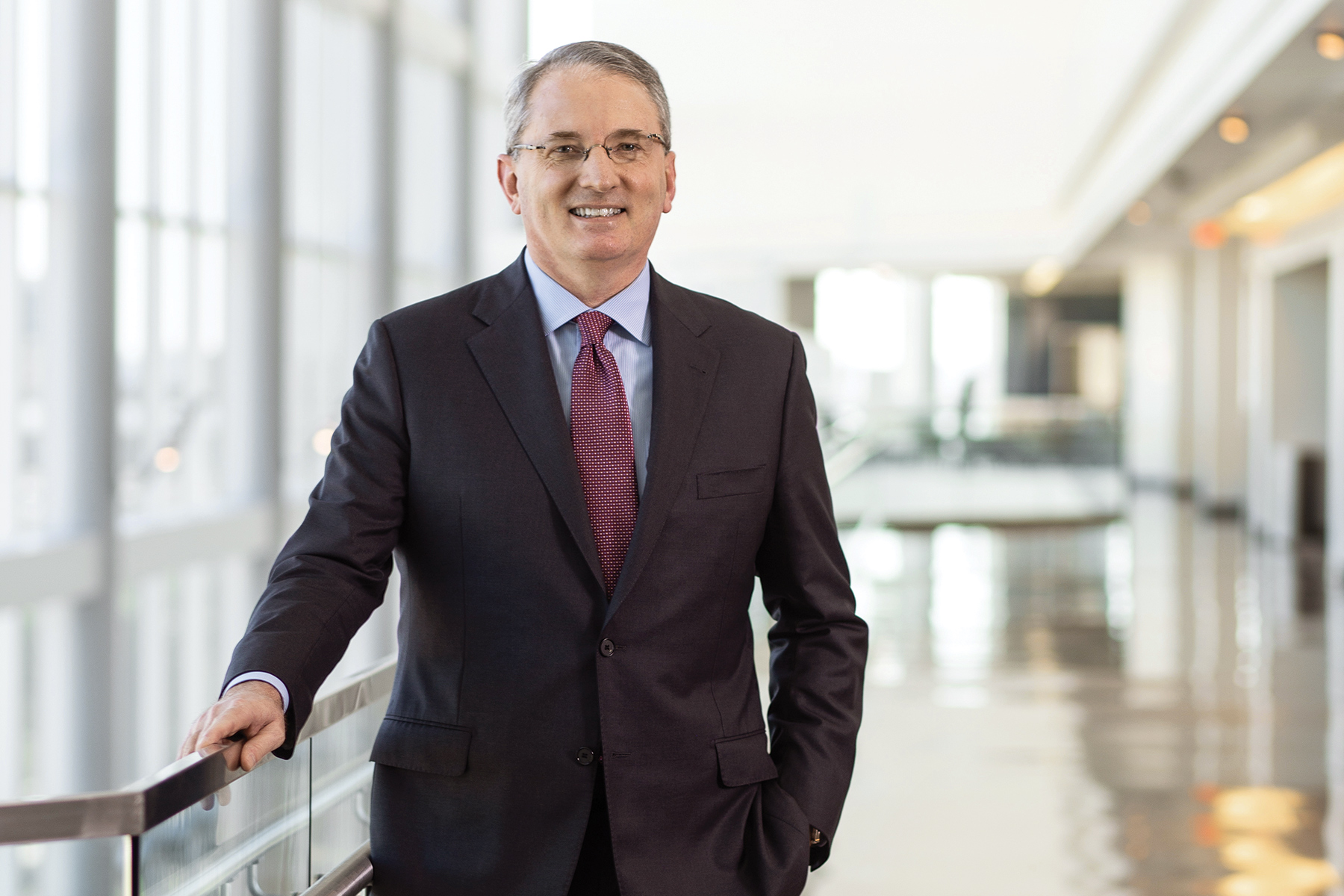Why you need to know him: Because he oversaw the planning, design, and construction of UT Southwestern’s William J. Clements Jr. University Hospital, a 460-bed facility that is consistently named the best in Dallas. And now he’s gearing up to lead its expansion.
The interventional cardiologist says he has enjoyed putting his medical experience into the design of a state-of-the-art facility, although he never saw himself moving away from patient care. Still, Warner seems to have been preparing for this role from an early age.
In track and field, middle-distance runners are the athletes that don’t quite fit in. They aren’t quite explosive enough to be a sprinter and don’t have the stamina to last for the longer races. But as anyone who has ever raced at 400 or 800 meters knows, they are the runners who are able to punish their bodies into sprinting for longer than one should sprint. They are in a constant state of pushing for the next step while knowing they have many steps ahead.
And so, Warner’s time as a middle-distance runner at Abilene Christian University prepared him well to oversee Clements’ design. Each day brought immediate challenges, decisions, and opportunities, but the completed hospital was often a long way off.
Warner grew up in Ransom Canyon, a tiny town east of Lubbock that sounds like it belongs in a dime western. After college at ACU, he attended Vanderbilt University for medical school, focusing on cardiology. He did his residency at UTSW and fellowship at Duke, where he was on faculty before he returned to Dallas.
He always had an interest in the operations of healthcare systems and how to improve quality and efficiency, but hadn’t given it much purposeful thought. After UTSW President Dr. Daniel Podolsky arrived, Warner interviewed to be the physician lead on the planning for the new Clements Hospital, but always though he would return to clinical work.
But he was so successful as physician lead, he was tapped in 2012 to become CEO of UT Southwestern’s University Hospitals and head up the entire project. As during his college running days, Warner needed to look at the bigger picture while focusing on the details, working to understand the nuts and bolts of what makes a hospital run.
“It was one of the more interesting things I have done in my life,” Warner says. “I was venturing off the path I had crafted for myself.”
Rather than seeing cardiology patients full time, Warner spent half his working hours co-chairing a steering committee for the new hospital, meeting with architects, patients, community members, valet drivers, food services workers, and others. He listened to what patients liked and didn’t like about the hospital and visited other facilities across the country. “It was invigorating,” he says.
As he sought to understand what made for a great hospital for patients, several factors emerged that he never would have considered as a physician. “Hospitals are areas of uncertainty and unpredictability” he says. “We want things that build confidence, and trying to turn those ideas into architecture was interesting work.”
Warner found that privacy and quiet were patient priorities, and the space where they spend long amounts of time needed to be made more comfortable.
He made other tweaks to design plans that have made Clements a more pleasant place for patients. Following surgery, patients are often wheeled out the front door looking bedraggled and unkept, which can add embarrassment to already vulnerable moments. A solution was devised to avoid post-surgery ogling. “We have separate path of travel so patients can leave without being in the public fray,” Warner says.
Placing patients at the center of the planning meant that sacrifices had to me made. Clinicians were moved closer to the patient rooms, and some employees no longer had an office. “It was a cultural transformation,” Warner says. “If the patient is first, someone has to be second.”
The design had improvements for hospital employees as well. A study from the National Library of Medicine found that nurses can walk up to five miles during a shift, and UTSW put pedometers on nurses to see how far they were walking. The new space reduced travel time so nurses could spend more time with patients by spreading supply closets and computer stations throughout the units, bringing down the number of steps required.
Clements Hospital opened in 2014, but it was immediately busier than expected. In his role as CEO and now as executive vice president for Health System Affairs, Warner is playing similar role in development of a new patient tower. It will add 300 beds and is expected to be complete in 2020.
Warner still sees a few patients, but finds a great deal of fulfillment in his new tasks. Somewhere between a sprint and a jog, he continues to push those around him to continually stay focused on great patient care. “You want people who value that work and understand it,” he says. “You know what it feels like when it is right, and want to translate that same experience to others.”






